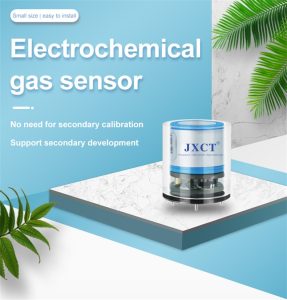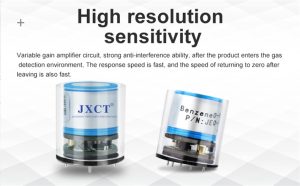Air pollution is a global environmental challenge that poses significant risks to human health and the ecosystem. While many pollutants are visible, such as smog or industrial emissions, there is a vast array of hidden air contaminants that are not easily detected by the naked eye. These hidden pollutants can have severe health implications, making it crucial to develop advanced technologies to identify and monitor them. In this article, we will explore how gas sensors are revolutionizing air quality monitoring by unveiling these hidden air contaminants.

The Limitations of Visible Air Pollutants:
Visible air pollutants, such as smoke and particulate matter, have long been the focus of air quality monitoring. However, there are numerous air contaminants that are odorless, colorless, and do not produce visible emissions. This includes gases like carbon monoxide (CO), nitrogen dioxide (NO2), ozone (O3), sulfur dioxide (SO2), and volatile organic compounds (VOCs). These hidden pollutants often go unnoticed but can have serious health effects, including respiratory problems, cardiovascular diseases, and even cancer.
Gas Sensors: Detecting the Undetectable:
Gas sensors offer a powerful solution to detect and monitor these hidden air contaminants. These sensors are designed to identify specific gases or volatile compounds in the air by using various detection principles, including electrochemical, semiconductor, and optical techniques. Gas sensors provide real-time measurements of pollutant concentrations, allowing for immediate action to be taken in case of high levels of contamination.
Identifying Indoor Air Contaminants:
Indoor air quality is a significant concern as people spend a considerable amount of time indoors. Gas sensors play a crucial role in identifying hidden air contaminants in indoor environments such as homes, offices, schools, and hospitals. For example, gas sensors can detect CO from faulty gas appliances, VOCs emitted by cleaning products and building materials, and radon gas seeping from the ground. By uncovering these hidden contaminants, gas sensors enable individuals to take appropriate measures to improve indoor air quality and protect their health.
Unveiling Outdoor Air Contaminants:
Gas sensors are also deployed in outdoor air quality monitoring networks to uncover hidden contaminants in the environment. These sensors can detect gases emitted by industrial facilities, power plants, and vehicles, providing valuable data for policymakers and urban planners. For instance, gas sensors can identify high levels of NO2 or SO2 near roadways or industrial zones that may require immediate action to mitigate pollution sources or implement emission control measures.
Sensing Industrial Emissions:
Industrial emissions are a major contributor to air pollution, releasing various hazardous gases and volatile compounds into the atmosphere. Gas sensors are used to unveil hidden contaminants in industrial environments, helping industries comply with emission regulations and improve worker safety. By continuously monitoring the air quality and detecting pollutant levels, gas sensors enable timely interventions to reduce emissions and maintain a healthy work environment.
Monitoring Agricultural Air Quality:
Agricultural activities can lead to the release of harmful gases and volatile compounds, affecting both human health and the environment. Gas sensors play a crucial role in monitoring agricultural air quality, highlighting hidden pollutants such as ammonia, methane, and pesticides. By identifying areas with excessive emissions, farmers can implement more sustainable practices and minimize the impact of agricultural activities on air quality.
Advancements in Gas Sensor Technology:
Gas sensor technology continues to advance, allowing for improved sensitivity, selectivity, and stability. Researchers are developing miniaturized and portable gas sensors that can be integrated into wearable devices, smartphones, and Internet of Things (IoT) platforms. This innovation empowers individuals to monitor their personal exposure to hidden air contaminants and make informed decisions to minimize health risks. Additionally, advancements in data analytics and artificial intelligence enable real-time interpretation of sensor data, enhancing the accuracy and efficiency of air pollution monitoring.

Conclusion:
Unveiling hidden air contaminants is essential for understanding the full extent of air pollution and its impact on human health and the ecosystem. Gas sensors offer a powerful tool to detect and monitor these invisible pollutants, both indoors and outdoors. By providing real-time data on pollutant concentrations, gas sensors enable individuals, communities, and policymakers to take proactive measures to reduce exposure to harmful air contaminants. As gas sensor technology continues to evolve, we have the opportunity to create a cleaner and healthier future by going beyond the visible and addressing the hidden
 : +86 155 8830 2704
: +86 155 8830 2704 : jxdziot@gmail.com
: jxdziot@gmail.com
